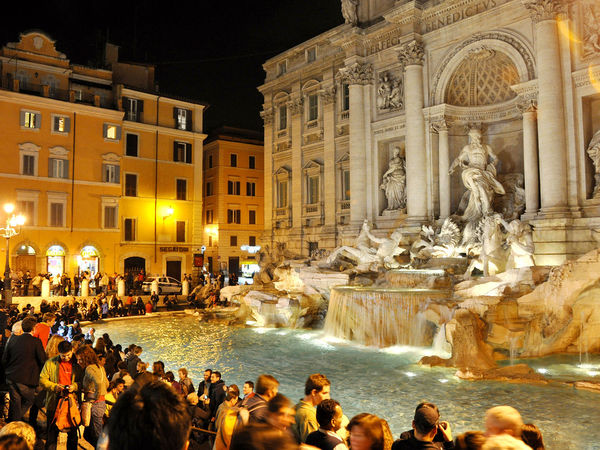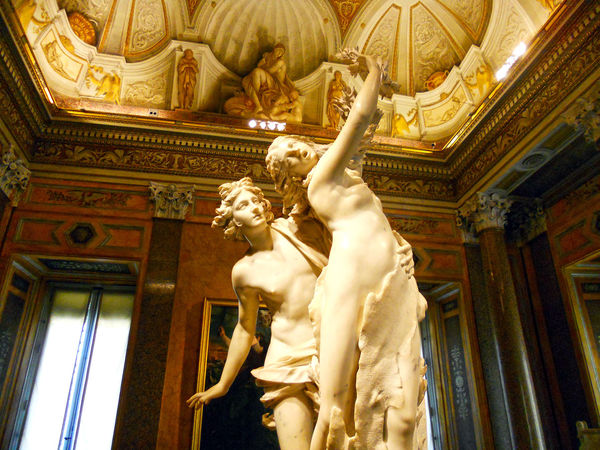Rome’s Inspiring Baroque Sights
By Rick Steves

Rome is a showcase of Western civilization, layered with elements of the city's 2,000-year history. Among the traffic-choked 20th-century boulevards, you'll find marble ruins of ancient times, early Christian churches, grand Renaissance buildings and statues, and a wealth of Europe's most sumptuous, inspiring sights — its Baroque treasures.
Rome is the birthplace of the Baroque style — and Gian Lorenzo Bernini, who lived and worked here in the 17th century, is considered its father. Bernini transformed the city in the 17th century, ornately ornamenting grand fountains, squares, and churches — and attracting pilgrims to the center of Catholicism. After the intellectual nature of the Renaissance, Baroque tapped into the heart rather than the head — and the Church used it to encourage emotional responses to the faith.
Even seemingly insignificant Roman churches like Santa Maria della Vittoria hold important treasures — such as Bernini's best-known statue, the Ecstasy of St. Teresa. Bernini invigorates reality with emotion, depicting Teresa just after being stabbed with the arrow of God's love, as that long-awaited moment when she meets her heavenly father has arrived. Now, the angel pulls out the arrow and watches her reaction. Teresa swoons, her eyes roll up, her hand goes limp, she parts her lips…and moans. The smiling, cherubic angel's face seems to say, "I know just how ya feel." You can simply feel, imagine, and see the lessons via the art — emotion going directly from your eyes to your heart. Don't reflect. Be awed, amazed, moved.
Emotions are tapped again inside the Church of Sant'Andrea al Quirinale, often called the “Pearl of the Baroque." Here, Bernini's altar painting depicts St. Andrew being crucified on his X-shaped cross. He gazes up toward the light. His soul seems to follow the bronze angels above him, up through a light-filled shaft. Then he reappears — now as a marble statue — above the altar. He bursts through the pediment, ascending on a cloud, into the golden light where he joins his fellow saints in the dome of heaven.
Bernini makes all these elements come together. The pink marble columns color-coordinate with the pink frame of the painting. A bronze angel rests his hand on the painting's marble frame. The delightfully backlit cherubs at the base of the shaft playfully look down on the action. And the suffused light filtering in from the dome brings all the colors together. Multitalented Bernini combines sculpture, painting, and architecture into un bel composto — a beautiful whole.
Bernini's many talents are also evident in St. Peter's Basilica, the greatest church in Christendom, representing the power and splendor of Rome's 2,000-year domination of the Western world. Built on the memory and grave of the first pope, this is where the grandeur of ancient Rome became the grandeur of Christianity. While Michelangelo designed the dome, Bernini designed the square out front a century later. Its ring of columns symbolizes the arms of the church welcoming everyone. Topping the columns are Bernini's 140 favorite saints, each 10 feet tall.
Bernini also worked on the church's interior, including much of its marble floor decoration, the massive statue of lance-bearing St. Longinus, and the altar area's seven-story bronze canopy (God's "four-poster bed"). The canopy "extends" the altar upward and reduces the perceived distance between floor and ceiling.
While Bernini was religious, he also embraced pagan subjects. Outside the city center and set in the greenery of surrounding gardens, the Borghese Gallery holds some of the finest examples of these. This plush museum was once a cardinal's lavish mansion, filled with the finest art money could buy — including Bernini's. It's hard to believe that a family of cardinals and popes would display so many works with secular and sensual — even erotic — themes. But the Borgheses felt that all forms of human expression glorified God.
Bernini's statues here merge realism with the dramatic myths. David's body — wound like a spring and lips pursed as he prepares to slay the giant — shows the determination of the age. Bernini was just 25 when he sculpted this — and the face of David is his.
The Borghese also holds my favorite statue in all of Europe, Apollo and Daphne. Bernini froze this scene at its most emotional moment — just as Apollo is about to catch Daphne and she begins to sprout branches from her fingers and roots from her toes. Apollo is in for one rude surprise. (The statue is now in particularly fine form, having spent two years in restoration.)
The flamboyance of Bernini's art continued to influence Rome's style even a century later. Rome's iconic Trevi Fountain — dating from the 1700s — is a watery avalanche of Baroque. While the architect who designed it had no inkling of electrical illumination, it seems made-to-order for floodlighting, which heightens the drama. It's said that if you throw a coin into this fountain, you will return to Rome. Every day, tourists test this superstition, trying to ensure their return to this Baroque-filled city. It sounds silly, but I do this every year and it seems to work.

